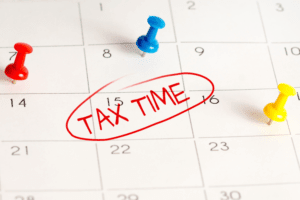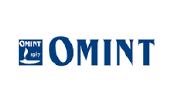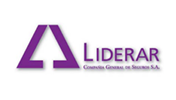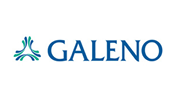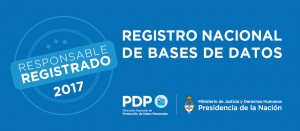The term ‘implicit interest rate’ simply means that nobody has explicitly mentioned an interest rate. When the financing component of a contract covers a period of less than one year, it may be acceptable, depending on the applicable accounting standard, for the seller to ignore the financing component and not record any interest. Instead, the full amount of the transaction proceeds is considered to be revenue unrelated to interest income.
The implied rate is an interest rate that expresses the difference between the forward/future rate and the spot rate. It serves as a useful tool for comparing returns across different assets and can be applied to any scenario that involves a forward or futures contract. For example, if a forward rate is 7% and the spot rate is 5%, the difference of 2% is the implied interest rate.
The incremental costs and the annual payments of that lease may result in a total financial expense that is significantly less than the estimated value of that lease asset at the end of its term. Interest rate is the amount charged by lenders to borrowers for the use of money, expressed as a percentage of the principal, or original amount borrowed; it can also be described alternatively as the cost to borrow money. For instance, an 8% interest rate for borrowing $100 a year will obligate a person to pay $108 at year-end.
GASB Lease Accounting: Two Examples of Transitioning to GASB 87 for Lessees
It is a leasing business that leases its products from the leasing department or professional leasing company of a large-scale manufacturing company. In your personal loan with the bank, there is no interest rate being stated. Let’s say you are borrowing a personal loan of $5,000 from a bank, and you need to pay it back as an installment in 12 months. Much like a CMBS, the implicit interest rate influences the decision-making process of a REIT’s investors, as it sets expectations for the future performance of the REIT. The risk-free rate is by far the easiest rate to determine under ASC 842. Rather than requiring complex calculations or research, the risk-free rate can simply be found online on the treasury website.
- In real estate investment, implicit interest rates represent the effective interest rate on the investment, taking into account factors like property tax, insurance, and asset maintenance costs.
- This article will discuss the interest rate options available to the lessee under ASC 842 and the implications and applications of each.
- This is not the case within the definition in IFRS 16, which only includes the fair value of the underlying asset within the implicit rate calculation.
- That’s because, and as we go through the inputs required to calculate the rate implicit in the lease, it will become more apparent, the lessee is not privy to this information.
- The risk-free rate is by far the easiest rate to determine under ASC 842.
To validate the implicit rate calculated in the example, we will use LeaseQuery’s Present Value Calculator. The number of payment periods remaining in the lease term as of the city’s transition date is three. Using the rate we previously calculated, 5.09%, we determine that the present value of the $3,500 annual payments is $10,000, the fair value of the asset. ASC 842 outlines specific guidelines for the treatment of initial direct costs based on the type of lease (operating, sales-type or direct financing). GASB 87, on the other hand, does not provide specific requirements as there is no longer a lease classification distinction under the new standard. It simply states that a lessor’s initial direct costs are to be recognized as outflows of resources when incurred.
The higher a borrower’s credit score, the more favorable the interest rate they may receive. Anything higher than 750 is considered excellent and will receive the best interest rates. As a result, they will either reject the lending application or charge higher rates to protect themselves from the likelihood that higher-risk borrowers default. For example, a credit card issuer can raise the interest rate on an individual’s credit card if they start missing many payments. Interest rates are involved in almost all formal lending and borrowing transactions.
The property with the lower implicit interest rate will be seen as a more attractive investment, as it has the potential for higher returns. This makes implicit interest rates important to both buyers and sellers in a given real estate market. The interest rate for many types of loans is often advertised as an annual percentage rate, or APR. APRs are commonly used within the home or car-buying contexts and are slightly different from typical interest rates in that certain fees can be packaged into them. For instance, administrative fees that are usually due when buying new cars are typically rolled into the financing of the loan instead of paid upfront. APR is a more accurate representation than the interest rate when shopping and comparing similar competing.
There are two alternative approaches for this and the approach chosen can affect calculations in questions in both of these areas of the Financial Management syllabus. The purpose of this article is to explain these approaches and clarify ACCA’s preferred approach. Since this is a one-year contract, the ratio is simply raised to the power of 1 (1 / time). Subtract 1 from the ratio and find the implied interest rate of 4.41%.
Examples of Implicit interest rate
If you borrowed $500 from a friend and agreed to pay them back $600, you’ve entered into an agreement with an implicit interest rate. That’s because no interest rate was explicitly stated, but you agreed to pay $100 in interest on top of the $500 principal you borrowed. In the U.S., credit scores and credit reports exist to provide information about each borrower so that lenders can assess risk. A credit score is a number between 300 and 850 that represents a borrower’s creditworthiness; the higher, the better. Good credit scores are built over time through timely payments, low credit utilization, and many other factors.
What is an Implicit Interest Rate?
The residual value is the amount the lessor expects the asset to be worth at the end of the lease term. [ 1 ] For operating lease payments under ASC 842, the interest expense incurred on the lease liability is classified as a “lease expense” as opposed to an “interest expense”. If you’re curious about the differences between an operating and finance lease under ASC 842, refer here.
How to Calculate Implicit Interest Rate
To do calculations or learn more about the differences between compounding frequencies, please visit the Compound Interest Calculator. As a reminder, the implicit rate is the rate at which the present value of the lease payments and the unguaranteed residual value equal the sum of the fair value of the underlying asset and any initial direct costs of the lessor. Also under IFRS 16 lessors party to finance leases use the interest rate implicit how tax shields work for small businesses in 2021 rate in the lease to measure the net investment in the lease. The net investment in the lease is presented as a receivable on the statement of net position. In real estate investment, implicit interest rates represent the effective interest rate on the investment, taking into account factors like property tax, insurance, and asset maintenance costs. The rate is often a key factor when investors are evaluating different investment properties.
The calculation will show you what is the annual implicit interest rate for your loan is. Now that the values are pinned down, all left to do is plug them into a financial calculator. Our number of periods is 36, present value is $20,000, payment value is $300, and future value is $15,000.
Suppose you want to know how the financial leasing is, you can read the lease agreement. You can be easily spot on if there is a finance cost tied up within the transaction. Once you key in all the amounts in the Excel sheet, you can copy the formula and change it to match your loan.
Implicit interest rate definition
While the implicit rate is not explicitly defined under GASB 87, the standard does reference Statement 62 for an explanation of the rate. It can be described as the internal rate of return on all payments or receipts related to the lease. Paragraph 40 of the Basis for Conclusions for GASB 87 (B40) indicates that a lessor should apply the interest rate it charges the lessee, which could be the implicit rate.
No matter the method a company uses to determine their IBR for their leases, it is important to document the method, reasoning, and overall findings and discuss the conclusions with the external auditors. The futures price is $60.13, with a settlement date in December 2021 (8 months to maturity). METHOD 2
The percentage figure is raised to the power of a fraction representing either the period to be pro-rated or the period which requires annualisation. METHOD 1
The percentage figure is multiplied by a fraction representing either the period to be pro-rated or the period which requires annualisation. This can be on either a daily or a monthly basis, depending on how the information is presented in the question.
Forwards and futures are used to lock in prices or rates in the future for hedging purposes. In the context of the implied rate, both forwards and futures can be used interchangeably. The implicit interest rate would be different if he paid her back over a longer period. It would also be different if John paid back in irregular installments.


